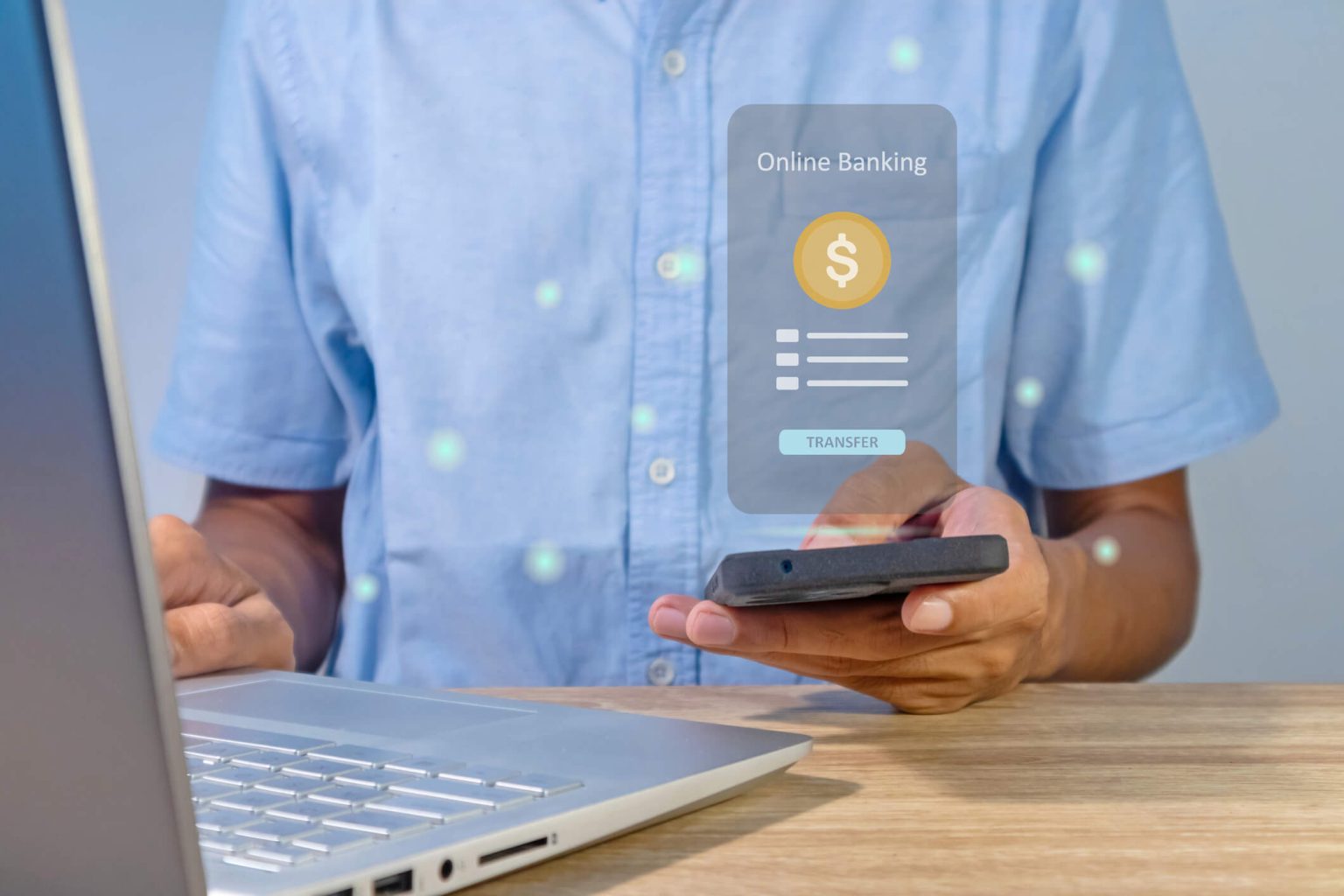Real-time Payment Processing in the Cloud: A Detailed Guide
Real-time payment processing in the cloud is transforming the financial landscape, offering instant, reliable, and scalable solutions to businesses and consumers alike. This detailed guide delves into the intricacies of cloud-based payment systems, highlighting their benefits, technological underpinnings, and the API-driven approaches that make real-time transactions possible.
Understanding Real-time Transaction Processing in the Payment Cloud
Real-time transaction processing refers to the ability to process payments instantly, without any delays or interruptions. The payment cloud, powered by cloud technology, provides the infrastructure and resources necessary to facilitate these real-time transactions. By leveraging the cloud’s scalability, flexibility, and reliability, businesses can ensure seamless payment experiences for their customers.
Instant Payment Solutions Powered by Cloud Technology

Cloud technology has revolutionized the payment industry by enabling instant payment solutions. With real-time payment processing in the cloud, businesses can offer their customers the convenience of making payments anytime, anywhere. Whether it’s e-commerce transactions, mobile payments, or peer-to-peer transfers, the cloud empowers businesses to process payments in real-time, enhancing customer satisfaction and driving revenue growth.
Understanding Instant Payment Solutions

Instant payment solutions are financial services that allow the immediate transfer of funds between accounts, regardless of the banking institutions involved. Unlike traditional payment processing that can take days, instant payments are processed in seconds, thanks to the always-on nature of cloud technology.
The Role of Cloud Technology in Payment Solutions
Cloud technology serves as the backbone for instant payment systems. It offers robust, scalable, and flexible resources that can handle large volumes of transactions without the need for physical infrastructure. This technology facilitates:
- Scalability: Cloud services can dynamically adjust to handle increasing transaction volumes, making them ideal for both small businesses and large enterprises.
- Reliability: With high uptime guarantees and data redundancy, cloud platforms ensure that payment services are available around the clock.
- Security: Advanced encryption and security protocols in cloud platforms help protect sensitive financial data against cyber threats.
Benefits of Real-time Transaction Processing in the Payment Cloud
Real-time transaction processing in the cloud has emerged as a pivotal technology in the financial sector, streamlining the way businesses and consumers handle transactions. This advanced approach not only boosts efficiency but also enhances the overall transaction experience. Here, we explore the myriad benefits that real-time transaction processing in the cloud offers, detailing how it revolutionizes financial interactions.
Enhanced Efficiency and Speed
One of the primary advantages of real-time transaction processing is the significant increase in processing speed. Transactions that once took days to clear can now be completed in seconds. This speed is crucial for businesses where cash flow management is key to operational stability. By enabling immediate transaction confirmation, companies can improve their liquidity management, reducing the risk associated with payment delays.
Improved Customer Experience
In today’s digital age, customers expect quick and seamless service. Real-time transaction processing meets these expectations by facilitating instant payments, thereby enhancing customer satisfaction. This is particularly beneficial in sectors like e-commerce, where a swift checkout process can significantly reduce cart abandonment rates. Instant processing also means that customers can access purchased services or products without delay, enhancing the overall user experience.
Greater Financial Accuracy and Visibility
With transactions processed in real time, businesses gain instant insights into their financial status. This real-time data is invaluable for making informed decisions about budgeting, investing, and other financial planning activities. It also aids in more accurate forecasting and financial reporting, which are crucial for maintaining the health of the business.
Enhanced Security Measures
Cloud-based transaction systems typically incorporate robust security protocols that safeguard sensitive financial data. Real-time processing reduces the timeframe for potential fraud or security breaches, as transactions are verified and settled almost instantaneously. Moreover, many cloud platforms are equipped with advanced security features such as encryption, fraud detection algorithms, and continuous monitoring, which further enhance transaction security.
Scalability and Flexibility
Real-time transaction processing systems in the cloud are inherently scalable, meaning businesses can easily adjust their transaction capabilities based on current demand. This flexibility is crucial for businesses experiencing rapid growth or those with fluctuating transaction volumes. Additionally, cloud platforms can support global transactions, making it easier for businesses to expand into new markets without the need for significant infrastructure investment.
Reduced Costs
By automating the transaction process and reducing the need for manual intervention, cloud-based real-time processing significantly cuts operational costs. These savings come from reduced labor costs, fewer errors, and decreased needs for physical infrastructure. Moreover, the pay-as-you-go model common with cloud services ensures that businesses only pay for the transaction processing they need, further optimizing costs.
Compliance and Regulatory Adherence
Regulatory compliance is a major concern for many businesses, particularly in the financial sector. Cloud-based real-time transaction systems are designed to comply with the latest regulatory standards, helping businesses adhere to laws and guidelines without extensive additional effort. Regular updates and compliance checks by cloud service providers ensure that businesses remain compliant as regulations evolve.
Exploring the Cloud Infrastructure for Real-time Payment Processing
The cloud infrastructure for real-time payment processing comprises various components, including servers, databases, networks, and security measures. Cloud service providers offer robust infrastructure-as-a-service (IaaS) and platform-as-a-service (PaaS) solutions, allowing businesses to leverage their resources and expertise for seamless payment processing.
Implementing Real-time Payment Processing in the Cloud: Best Practices
Real-time payment processing in the cloud is becoming increasingly vital for businesses seeking efficiency, scalability, and enhanced customer service. Implementing such systems involves navigating various technological, security, and regulatory challenges. Here we outlines best practices for deploying real-time payment processing solutions in the cloud, ensuring optimal performance, security, and compliance.
- Choose the Right Cloud Service Provider: Select a reputable cloud service provider that offers high availability, scalability, and robust security measures to ensure uninterrupted payment processing.
- Optimize Network Connectivity: Establish reliable and high-speed network connections to minimize latency and ensure real-time transaction processing.
- Leverage Cloud-native Technologies: Utilize cloud-native technologies, such as serverless computing and microservices architecture, to enhance scalability, agility, and cost-efficiency.
- Implement Redundancy and Disaster Recovery Measures: Employ redundant systems and disaster recovery strategies to ensure business continuity and minimize the impact of potential outages.
Security Considerations for Real-time Payment Processing in the Cloud
While real-time payment processing in the cloud offers numerous benefits, it also introduces security concerns. Businesses must prioritize security measures to protect sensitive payment data and maintain customer trust.
Key Security Risks in Cloud-Based Payment Processing
- Data Breaches: The most prominent risk in cloud-based systems is data breaches. Sensitive financial information, such as bank account details and personal identification numbers, can be exposed to cybercriminals if not adequately protected.
- Identity Theft: As real-time payment systems often handle vast amounts of personal data, they are prime targets for identity theft. Fraudulent activities can result from stolen credentials or phishing attacks.
- Insider Threats: Security threats can also originate from within an organization. Employees with access to the cloud infrastructure might misuse their privileges, intentionally or unintentionally, leading to data leaks or manipulations.
- DDoS Attacks: Distributed Denial of Service (DDoS) attacks aim to overwhelm the system with a flood of traffic, causing disruptions in service and potentially halting transaction processes.
Strategies for Mitigating Security Risks
To combat these risks, organizations must implement robust security strategies that encompass both technological solutions and organizational policies:
- Encryption: Data encryption is essential for protecting information transmitted between users and cloud servers. Encrypting data at rest and in transit ensures that even if data is intercepted, it cannot be read without the decryption key.
- Multi-factor Authentication (MFA): Implementing MFA can significantly reduce the risk of unauthorized access. This method requires users to provide two or more verification factors to gain access to their accounts, adding an extra layer of security.
- Regular Audits: Conducting regular security audits and compliance checks can help identify and address vulnerabilities within the system before they are exploited by attackers.
- Access Control: Limiting access to sensitive data based on roles can prevent insider threats. Strict access control policies ensure that employees can only access the data necessary for their job functions.
- DDoS Protection: To guard against DDoS attacks, organizations can use specialized mitigation services that detect abnormal traffic flows and filter out malicious traffic.
- Continuous Monitoring: Implementing continuous monitoring tools can detect suspicious activities in real-time. These tools can alert administrators to potential security breaches, allowing for quick response and mitigation.
Integration Challenges and Solutions for Real-time Payment Processing in the Cloud
Challenge 1: Security and Compliance
- Security Concerns: Real-time payment processing involves sensitive data that must be protected against breaches and cyber-attacks. The cloud’s shared environment can increase vulnerability if not properly managed.
- Compliance Issues: Payment systems must comply with various standards such as PCI DSS (Payment Card Industry Data Security Standard), which can be complex in a cloud setting where control over data storage and transmission may be less straightforward.
Solutions:
- Use of Dedicated Security Services: Implement cloud services that offer dedicated security features for payment processing, such as end-to-end encryption and tokenization, to protect data in transit and at rest.
- Regular Compliance Audits: Engage in periodic audits and ensure cloud services are compliant with necessary regulations. Utilize compliance as a service (CaaS) offerings to simplify the management of regulatory requirements.
Challenge 2: Latency and Performance
- Latency Issues: Real-time processing demands high-speed transactions. In the cloud, latency can occur due to network issues, leading to delays in payment processing.
- Performance Bottlenecks: High volumes of transactions can strain cloud resources, leading to performance degradation.
Solutions:
- Optimized Cloud Architecture: Deploy applications in cloud regions closer to the user base to reduce latency. Use load balancers and auto-scaling features to manage sudden spikes in traffic.
- Performance Monitoring: Implement robust monitoring tools to continuously track system performance and address issues proactively.
Challenge 3: Scalability and Flexibility
- Scalability Limitations: As businesses grow, payment processing systems must handle increased loads without impacting performance.
- Flexibility Concerns: Adapting to new payment methods and technologies can be cumbersome in a rigid cloud environment.
Solutions:
- Scalable Cloud Infrastructure: Use cloud solutions that offer easy scalability options, such as serverless computing, which can automatically adjust resources based on transaction volume.
- Microservices Architecture: Adopt a microservices architecture to enhance flexibility, allowing easy integration of new payment methods and technologies without overhauling the entire system.
Challenge 4: Integration with Legacy Systems
- Compatibility Issues: Many organizations use legacy systems that are not readily compatible with modern cloud-based solutions.
- Data Integration Challenges: Seamless data exchange between cloud-based payment systems and existing databases or applications can be difficult.
Solutions:
- Hybrid Cloud Environments: Implement a hybrid cloud approach that allows integration of cloud services with on-premises legacy systems.
- Middleware Solutions: Use middleware to create a communication layer between old and new systems, facilitating data synchronization and process integration.
Challenge 5: Data Management and Analytics
- Data Complexity: Real-time processing generates large volumes of data, which can be challenging to manage and analyze effectively.
- Insight Extraction: Deriving actionable insights from transaction data in real-time requires advanced analytical tools and capabilities.
Solutions:
- Advanced Data Management Systems: Employ sophisticated data management platforms designed for high volume, velocity, and variety of data typical in payment systems.
- Real-time Analytics Tools: Use real-time analytics and business intelligence tools to process and analyze data on the fly, enabling immediate decision-making and enhanced customer service.
Frequently Asked Questions
Q.1: What is real-time payment processing?
Real-time payment processing refers to the ability to process payments instantly, without any delays or interruptions.
Q.2: How does cloud technology enable real-time payment processing?
Cloud technology provides the infrastructure and resources necessary to facilitate real-time payment processing, offering scalability, flexibility, and reliability.
Q.3: What are the benefits of real-time transaction processing in the payment cloud?
Benefits include enhanced customer experience, increased efficiency, improved cash flow, fraud prevention, and scalability.
Q.4: What security measures should businesses consider for real-time payment processing in the cloud?
Security measures include data encryption, tokenization, compliance with industry standards, and multi-factor authentication.
Conclusion
Real-time payment processing in the cloud has become a vital component of modern business operations. By leveraging cloud technology, businesses can offer instant payment solutions, enhance customer experiences, improve efficiency, and ensure secure transactions. While challenges such as integration and security exist, businesses can overcome them by adopting best practices and partnering with reliable cloud service providers. Embracing real-time payment processing in the cloud is not just a trend but a necessity for businesses looking to thrive in the digital age.










